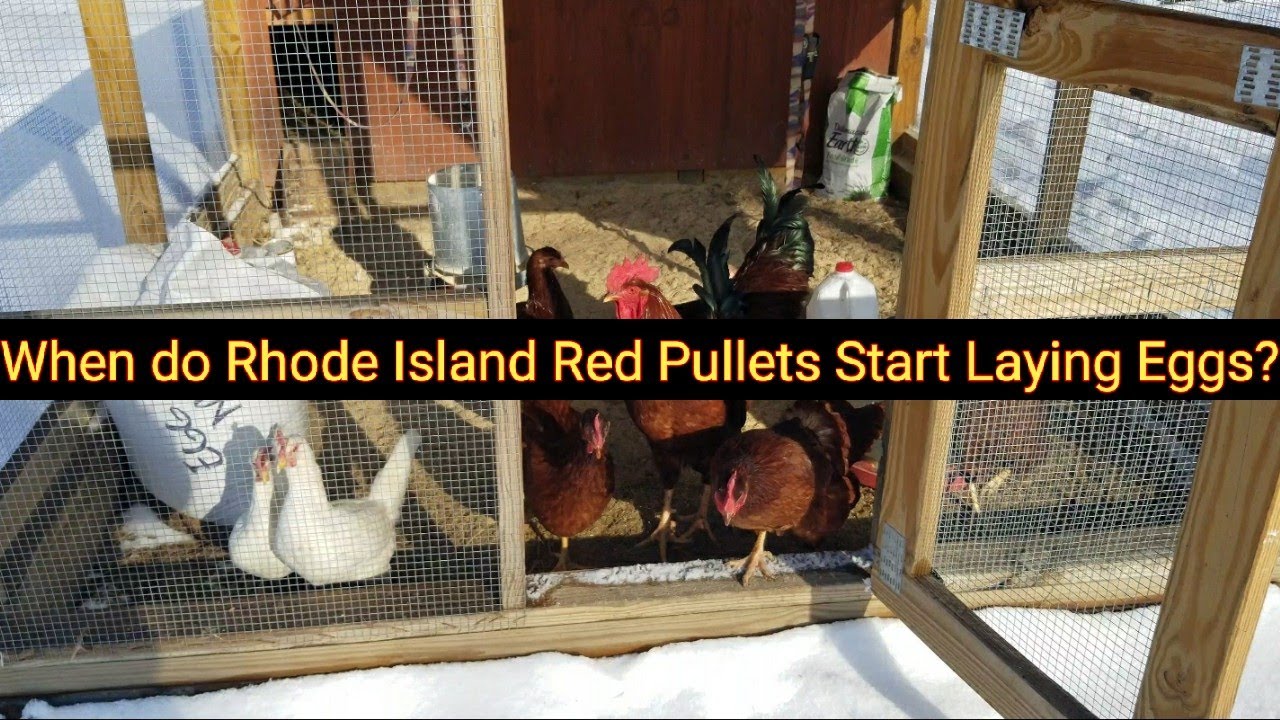The Winter Season and Rhode Island Reds
Rhode Island Reds are known for their excellent egg-laying capabilities. However, many poultry owners wonder if this productivity continues during the winter season. In this article, we will explore the egg-laying patterns of Rhode Island Reds during winter and discuss factors that can affect their production. We will also provide strategies to encourage egg-laying, tips for maintaining optimal health, and advice for collecting and storing eggs during this cold season.
Understanding the Egg-Laying Patterns of Rhode Island Reds
Rhode Island Reds are consistent layers throughout the year, including the winter season. However, it is important to note that their egg production may decrease during colder months. This reduction is primarily influenced by environmental factors and the natural instinct of hens to conserve energy.
Factors Affecting Egg Production in Rhode Island Reds
Several factors can influence the egg production of Rhode Island Reds during winter. The most significant factor is the decrease in daylight hours. As days become shorter, hens receive fewer cues to stimulate egg production. Additionally, colder temperatures can affect their metabolism, reducing their energy levels and impacting egg-laying.
The Role of Temperature in Egg-Laying during Winter
Rhode Island Reds are hardy birds, but extreme cold temperatures can affect their egg-laying abilities. When exposed to very low temperatures, hens tend to prioritize their energy for maintaining body warmth rather than egg production. It is essential to create a suitable environment to encourage optimal egg-laying during the winter season.
Strategies to Encourage Rhode Island Reds to Lay Eggs in Winter
To encourage Rhode Island Reds to lay eggs during winter, several strategies can be implemented. Providing adequate lighting, adjusting nutrition, ensuring optimal health, maintaining proper shelter and comfort, and avoiding stress factors are crucial for promoting egg production.
Providing Adequate Lighting for Winter Egg Production
Since the decrease in daylight hours can negatively impact egg production, ensuring adequate lighting is essential. Supplementing natural light with artificial lighting can stimulate hens to continue laying eggs as if it were still the long daylight hours of summer. Providing 14-16 hours of light per day is ideal for maintaining consistent egg production.
Adjusting Nutrition to Promote Egg-Laying in Rhode Island Reds
Proper nutrition plays a vital role in the egg-laying capabilities of Rhode Island Reds during winter. Feeding a balanced and nutrient-rich diet, including high-quality layer pellets, will provide the necessary energy and nutrients for consistent egg production. Adjusting the feed according to the hens’ needs and supplementing with calcium-rich foods can also be beneficial.
Ensuring Optimal Health for Winter Egg Production
Maintaining optimal health is essential for Rhode Island Reds to continue laying eggs during winter. Regular health check-ups, a clean and hygienic environment, and providing access to fresh water are crucial. Additionally, ensuring vaccinations, addressing any signs of illness promptly, and providing supplements like vitamins and probiotics can support their overall health and egg-laying abilities.
Maintaining Proper Shelter and Comfort for Rhode Island Reds
Rhode Island Reds require adequate shelter and comfort to lay eggs consistently during winter. Insulated coops, good ventilation, and proper bedding are necessary to protect them from extreme cold temperatures. Ensuring that the coop is draft-free and offering extra bedding for insulation can provide the comfort and warmth they need to continue egg-laying.
Avoiding Stress Factors that Inhibit Winter Egg-Laying
Stress can adversely affect the egg-laying abilities of Rhode Island Reds. During winter, it is crucial to minimize stress factors such as overcrowding, predator threats, and sudden changes in the environment. A calm and quiet environment, along with regular routines, can help hens feel secure and encourage them to continue laying eggs.
Monitoring Rhode Island Reds’ Egg Production in Winter
Regular monitoring of egg production is essential to gauge the success of the strategies implemented. By keeping a record of the number of eggs laid each day, poultry owners can identify any fluctuations in production and make necessary adjustments promptly. This data can also help identify any health issues or nutritional deficiencies that may be impacting egg-laying.
Tips for Collecting and Storing Eggs during the Winter Season
Collecting and storing eggs properly is crucial to maintain their freshness and quality during winter. Eggs should be collected frequently to prevent freezing and kept clean and dry. It is advisable to store them in a cool place, ideally at a temperature of around 45-55°F (7-13°C), to extend their shelf life. Turning the eggs daily can also help prevent the yolks from sticking to the shell.
In conclusion, Rhode Island Reds do continue to lay eggs during the winter season, although their production may decrease. By understanding their egg-laying patterns and implementing strategies such as providing adequate lighting, adjusting nutrition, ensuring optimal health, maintaining proper shelter and comfort, and avoiding stress factors, poultry owners can encourage consistent egg production. Monitoring production and following proper egg collection and storage techniques are vital for maximizing the benefits of raising Rhode Island Reds during winter.




